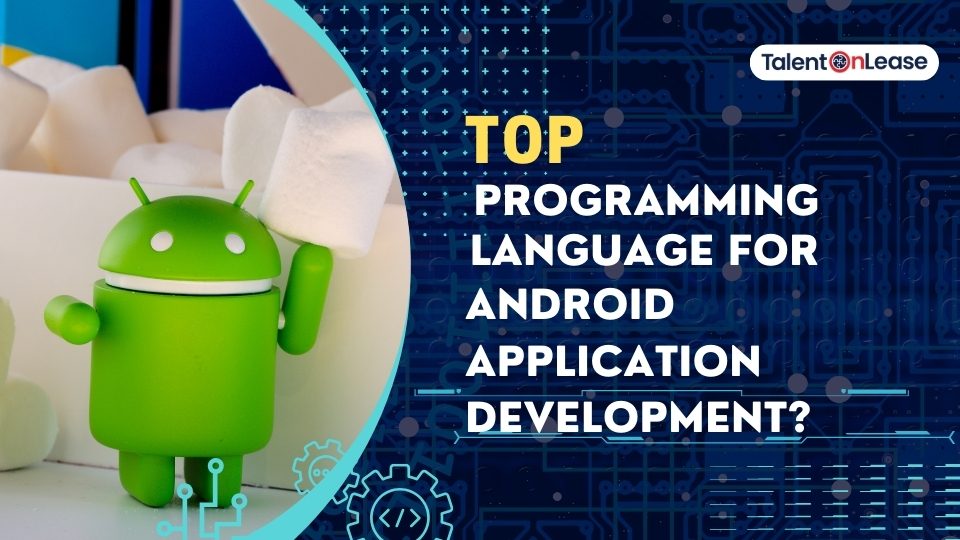Top 10 Best Practices for Mobile App Development With React

In today’s fast-moving digital world, mobile applications have become an important part of business. They cover a large range of end users. Using mobile applications for businesses can help them expand their businesses.
But, building successful mobile applications requires careful planning and proper execution. It also needs adherence to best practices across the process of application development.
In this article, we will discuss the best practices that one should follow before starting mobile app development with React. Following these practices strictly can guarantee business in building a successful mobile application.
WHAT IS MOBILE APP DEVELOPMENT?
Mobile Application Development is the process of creating software. It runs specifically on mobile devices and tablets. These mobile devices are powered by mobile application operating systems such as Android and iOS. The entire process of developing mobile applications involves different stages. These stages include Planning, Design, Development, Testing, and Deployment. Each stage involves different users with unique roles. It leads to successful mobile applications.
Businesses can choose a platform for their mobile application based on their requirements. The platform can be Native or Cross-platform. Below are some of the most commonly used mobile application platforms.
- Android (Native)
- iOS (Native)
- Flutter (Cross-platform)
- Xamarin (Cross-platform)
- React (Cross-platform)
WHAT IS REACT?
It is a framework developed by Facebook. It is used for creating native-style apps for iOS & Android. The framework can be developed under one common language, JavaScript. At first, Facebook only developed React to support iOS. But, with the support of the Android operating system, the React library can now render mobile UIs for both platforms.
If you are looking for shorter development cycles, quicker time to deployment, and better app performance, React is the best framework to use. React Native Developers are key to cross-platform success due to their ability to leverage the framework efficiently across both operating systems.
Building with React is extremely efficient and highly addictive. But, getting started can be a little tricky. React uses Node.js. It uses a JavaScript runtime to build your JavaScript code.
Requirements for React:
- Basic knowledge of HTML, CSS, and JS.
- Basic knowledge of ReactJS.
- Node.js should be installed in your system.
TYPES OF REACT:
In React, there are two main types of components that make up an application. They are Class components and Function components. These are structured the same as they would be in a regular React app for the web.
1. CLASS COMPONENTS
Class components are JavaScript classes. It extends a base class from React called component. This gives the class app access to the React lifecycle methods like render. It also gives access to the state/props functionality from the parent component.
Class components are used as container components. It handles state management and wraps child components.
2. FUNCTIONAL COMPONENTS
Functional components are simpler. They do not manage their state. Also, they do not have access to the lifecycle methods provided by React. They are plain old JavaScript functions. They are sometimes called stateless components.
Functional components generally are just used for display purposes. These components call functions from the parent component. It handles user interactions or state updates.
10 BEST PRACTICES FOR MOBILE APP DEVELOPMENT WITH REACT:

In mobile app development with React, following the best practices is important. We are going to look at the strategies for creating top-tier mobile applications.
1. Plan Before You Code
Adopting an efficient codebase structure helps developers maintain code easily in the future. Planning before coding helps in large enterprise projects where many developers work. The commonly used structures in Android and iOS application development are MVVM, MVC, and MVP.
2. Utilize React Native Components
Most components can be customized when they are created with different parameters. At runtime, React Native creates the corresponding Android and iOS views for those components. Businesses that hire Mobile App Developers who are experienced with React Native can efficiently create a single component that works seamlessly across different parts of the app.
3. State Management
You can manage the state in React within a single component by using the ‘useState’ hook. To manage the state of the application globally, you may need to use more solutions. It can be adapted as your codebase grows. You can combine reducers and context to manage the state of a complex screen.
4. Optimize Performance
Optimizing application performance is crucial to delivering a smooth and responsive user experience. It is important for large enterprise applications such as banking, medical, and e-commerce. In these areas, performance plays a vital role in user experience.
Cut the use of resources and try to use them with the least size and with the best possible quality. Reduce loading time and optimize code for speed and efficiency.
When optimizing performance, React is great for mobile apps, while Next.js excels in web apps with server-side rendering. Learn more in our comparison: Next.js vs React: Which is Better for Your Development Needs?
5. Focus on User Experience (UX)
User Experience (UX) plays a vital role in the success of mobile applications. Each mobile platform comes with its User Interface (UI). you should focus on standards such as material design for Android and HR guidelines for iOS.
For good mobile app development with React, use prototyping and usability. It will gather the end user’s feedback before implementation. It will increase the chance for app success.
6. Testing and Debugging
Testing is a very important process involved in the entire project development cycle. Testing helps developers to identify bugs in an application. Debugging means removing the bugs that were identified during the testing process. Properly tested and debugged apps result in the least live bugs. It also helps in a positive end-user experience.
7 Use of Third-Party Libraries
Third-party libraries offer pre-built functionalities that speed up the development process. Instead of writing complex code from scratch, developers can integrate these libraries. They can use it to add features like payment gateways, data visualization tools, or UI tools.
8 Handle Navigation Properly
React Navigation provides a stack-based navigation model. It allows screens to be pushed onto and popped out of a navigation stack. You can define the navigation structure of your app using a Stack Navigator. It maintains a stack of screens.
9 Implement Security Best Practices
App security and data privacy are prior concerns for end users. Especially for the apps that deal with user’s data such as social media apps and banking apps. Avoiding security and privacy also results in delisting applications from their app stores. Follow best security practices such as encryption. Encryption stores data in a database and local storage.
10 Continuous Integration and Deployment (CI/CD)
CI/CD is a set of practices that help automate the process of testing and deploying your application. It ensures that your app is consistently built, tested, and deployed. It reduces the chances of bugs and makes the deployment process faster and more reliable.
Conclusion:
Mobile App Development with React results in efficient quality. It also results in least bugs, and fast performance. It helps businesses to grow their business and keep end users engaged. Follow the best practices while developing an application. It will help businesses to make an app successful across the users.
TalentOnLease is the best IT Recruitment Agency that hires Mobile App Developers. They also hire React Native Developers.










